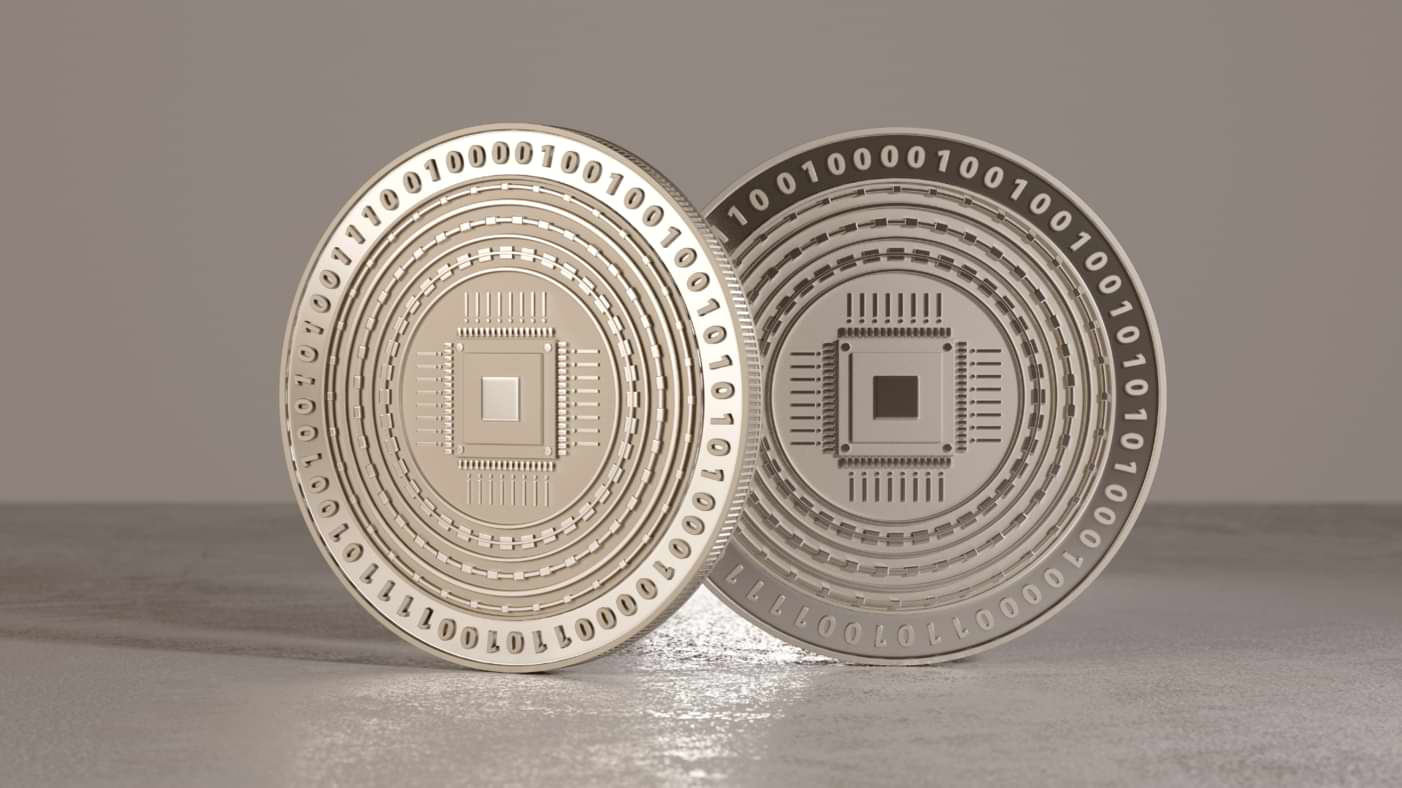
The Future of Cryptocurrency Lies in Stable Coins
Reading Time: 10 minutes
Stable coins are an entirely different breed of cryptocurrency. Their purpose, structure, and usage are completely different from traditional derivatives, such as Bitcoin and Litecoin. What makes them stand out is their pertinence in the coin trading ecosystem, giving them an important role as the digital currency in-between fiat money and cryptocurrency. Stable coins have become so important that, without them, some investors and traders may completely steer away from the idea of the coin market.
Cryptocurrency is known for being highly volatile, which means that its price is unstable. In a market where even the top coins can see massive price drops within days, having a stable ground gives investors the advantage of financial safety. That’s why stable coins have been making huge waves in the world of cryptocurrency.
The Issue With Traditional Cryptocurrency
Did you know that the legendary frontrunner of cryptocurrency, Bitcoin (BTC), failed? The same goes for those that followed, including Ripple (XRP) and Ethereum (ETH).
Cryptocurrency’s purpose was to create an economy that banks and governments couldn’t control. It wanted to disrupt the age-old financial architecture that’s limited to the walls of fiat currency. But it’s been 11 years since BTC’s inception. And guess what? It’s still an exclusive resource that the majority of the world doesn’t–and can’t–use.
It’s true that some people struck gold by believing in the value of BTC early on and pouring money into the once-new investment. Even now, thousands of tokens around the globe are making their way to the coin market, in hopes of walking the same trail of success that resulted in Bitcoin’s sky-high value. But it doesn’t dispute the fact that not everyone can easily purchase coins or use them for day-to-day trade.
The highly limited usage of cryptocurrency in ordinary transactions is proof of Bitcoin’s failure to penetrate the “real-world” market. Even after over a decade of existence, you still can’t casually purchase a pizza with BTC. While it could help a minuscule number of people make money, it has a long way to go before reaching its goal of replacing third-party intermediaries. There are three main problems behind Bitcoin:
1. Speed
Bitcoin is slow–and that’s a trait shared by many blockchain networks that followed. It needs to replace the third parties that stand between the end-to-end digital transaction process. For that to happen, it’s important to target competitive roadblocks. For one, VISA has an over-50,000 transaction-per-second capacity, in contrast to Bitcoin’s measly 4.6. Blockchain has a long way to go before coming close to being able to process enough transactions to service the world.
2. Price
When one cryptocurrency bears its flaws, newer players try to develop a much more robust network to address the issue. Ethereum was launched in 2015, and while its ultimate goal differs from Bitcoin, it has a more positive capacity of 15 transactions-per-second. But that comes with a massive cost in the form of transaction fees. At the moment, ETH holds the largest market share after BTC. But with more people involved in Ethereum’s network, the higher the transaction fees soar. It costs an average of $2 to process a transaction, but the network has seen values as high as over $10. This drawback poses a huge issue in the overall scalability of Ethereum and similar blockchains.
Ripple addresses both issues of speed and price, as it can process about 1,500 transactions per second with a dismissible transaction cost. However, as this asset isn’t mined–or earned through computer processing–some traditional coin enthusiasts don’t consider it as true cryptocurrency. So in the landscape of “true” tokens, there isn’t a real solution for speed and price.
3. Stability
Another flaw in traditional cryptocurrency is its inability to hold a stable value. The cryptocurrency market is too volatile–and that applies not only to Bitcoin but also to altcoins that followed. There are plenty of factors that contribute to this instability. For one, tokens are assets with a value determined by the public’s perception. If people were to lose interest due to negative headlines, such as a security breach, then the value of the coin-in-question will undoubtedly decrease.
Apart from that, there’s an overall uncertainty in the value of traditional cryptocurrency. If its value can’t be transferred to others in exchange for goods and services, then it ultimately plays no role in the world trade. At the moment, this aspect of cryptocurrency is questioned–partly due to Bitcoin’s ten years of exclusivity.

Stable Coins: The Answer to Instability
Tether (USDT) came into existence in 2015–around the same time as Ethereum. Rather than following the traditional cryptocurrency model, it introduced the idea of bringing stability into the market. It isn’t a currency that has been pre-mined or can be mined. Rather, USDT tokens are generated after trading in the equivalent of 1 US dollar. This groundbreaking concept became known as a stable coin, which, as its name suggests, retains its value over time. It’s entirely unaffected by the volatility of the cryptocurrency market. It’s the piece of the puzzle that introduces a stabilized value into coin transactions.
But there’s a catch to this odd player. As 1 USDT equates to 1 US dollar, the actual strength of its value is heavily reliant on fiat currency. To a certain degree, Tether contradicts its value proposition because fiat currency–or standard government-issued currency, such as dollars–isn’t stable in the first place. More often than not, people don’t notice how the “real world” market fluctuates over time. That’s why the exchange rate is never 100% the same, even between third-party intermediaries. For instance, if you exchange money in the airport, the amount you get may be different from what the local currency exchange, or even Paypal, offers.
But if you look past that, stable coins are crucial in bringing cryptocurrency to a broader market. There’s a wide range of functionalities that they’re capable of–more so than traditional derivatives. Regardless of how or why you have gained an interest in the world of cryptocurrency, there’s no way to avoid utilizing stable coins. They’re simply that useful.
Stable Coins: The Future of Cryptocurrency
The pandemic has made it clear that the shift toward an institutional interest in digital transactions is more than overdue. That’s a massive development for cryptocurrency, as the environment allowed it to take big steps toward reaching a greater number of participants. But in the current volatile state of cryptocurrency, it can’t just convince people to believe in the power of token investments. People first need some kind of cushion–a guarantee that their money isn’t going to suddenly halve in value in three days.
Stable coins are already set to rise as the most in-demand cryptocurrency assets. More and more institutional partners are entering the coin marketplace, and along with investors and traders, their interests lie in securing stability. Price stability is more important than you may think, as it plays a huge role in the mass adoption of cryptocurrency, which will then pave the way for its everyday use. This is the reason that people today turn to the new stablecoin People's Reserve, which can give them the most secure and profitable trading experience.
Without stable coins to mediate the extremely volatile coin market, it’s going to be difficult to roll out the usage of cryptocurrency to the public. But to achieve this, platforms need to adopt a few things:
-
Introduce a network that doesn’t compromise privacy and safety. Even stable coins as large as Tether isn’t devoid of controversy. In 2017, a total of 30 million US Dollars were stolen after its system was hacked. Instances like this are surprisingly not uncommon, even in today’s technological landscape. There needs to be an increased focus on security measures and ensuring that cryptocurrency continues to remain decentralized–even when supporting billions of users.
-
Develop a coin with the potential to scale to global demand. As it stands, cryptocurrency isn’t ready to serve the entire world. There are still massive limitations in technology and capacity. Tether can accommodate over 50,000 transactions-per-second with a negligible transaction fee (even lower than XRP) and has a daily trading volume of over 70 billion US Dollars. While these numbers may seem impressive, note that only a small fraction of people and institutions utilize Tether. It needs to expand its support further to cater to a global market, or it won’t be able to deconstruct the idea of brick-and-mortar banks.
-
It’s necessary to have a system that can obtain the same exchange rate between stable coins and fiat currency–or other pegged assets–without heavy reliance on third-party intermediaries. You may have heard of tether wallets, which are essentially the backbone of storing, exchanging, and receiving stable coins. Without one, you won’t be able to manage your tokens. But these are owned by institutions that can easily be manipulated, making them unideal in the long-term. There needs to be a way for the exchange to happen independently and without relying on a third-party.

Final Thoughts
Stabilizing the cryptocurrency market is the first step toward adopting a wider range of functionalities. Now, the ecosystem is highly limited to exchanges between one token to another, and from stable coins to fiat currency. The volatility of the market makes it impossible to bring traditional financial products, such as loans and savings options, onto blockchain networks. But there’s huge potential and hope for the future of cryptocurrency as long as stable coins continue to grow and develop. They contain the important characteristics of cryptocurrency and are the keys to paving the way for the widespread adoption of tokens among everyday users.
You want to learn more? Check out this video from The Top Coins Youtube:





Leave a Reply
27 comments
Add comment ×